Sterling placement result for SRM University – AP, Andhra Pradesh’s maiden batch cements its place as a new force in Indian education
Sep 30, 2020, Andhra Pradesh: First is forever, because it sets the benchmark for others to follow and beat. Not surprisingly then, all eyes in academia were trained on the placement results of the maiden batch of SRM AP, which was set up with the aim of being a world-class university. It has taken giant strides in a short span of time, raising the bar for higher education in the country. And the sensational placement results, in spite of this year’s circumstances, have taken it a step closer to cementing its place as the force to reckon with in Indian academia.
The Covid-19 pandemic has put a spanner in the placement plans and outcomes for many universities across India. But SRM AP seems to have successfully navigated through the pitfalls by taking its founding batch to their dream job profiles. Its early placement run and seamless transition to online hiring seem to have paid off. Besides dynamic profiles, the maiden placement season for the university has exceeded expectations with its highest salary package of Rs. 29.5 LPA, which was offered to Sri Ritika Katragadda by global giant Amazon.
Anheuser-Busch InBev, HealthRx (Bajaj Finserv Health Ltd., Optum Global Solutions, Sahaj Soft, Sabre Corporation, Amadeus LabsCoviam Technology, Walmart Labs, Standard Chartered, Virtusa, and L&T Technology Services Ltd are some of the top-notch recruiters at SRM AP. It’s interesting to note that several of these renowned organizations have hired multiple candidates from the maiden batch, instating their faith in the University’s programs. IT sector in India, in particular, will now see a strong presence of SRM AP graduates as they make their mark from Pune to Bangalore and Chennai.
The multi-stream research-focused university has strived to create a transformative learning experience for its students. Its collaborations with well known International universities offer students a platform to groom themselves as global professionals of tomorrow. Faculty members too have strong International exposure, which helps students gain insights into best global practices and strategies. The maiden batch of SRM AP found fantastic opportunities to put their learning into practice through internships with well-known brands and organizations.
Sri Ritika Katragadda made her internship with Amazon count and bagged the plum placement as Software Developer. And she wasn’t the only one. Several students of the maiden batch bagged PPOs and placement cum internships, which speaks volumes about their training at the University that has led to a smooth transition from the classroom to boardrooms. They will now start their careers as Software Developers, Software Engineers, Solution Consultants, and Technical Support Engineers etc. charting their way to professional success and becoming glorious ambassadors for their university. As the first among equals!
Dr V Masilamani and Prof Dipti Prasad Mukherjee navigated the audience through engaging technical sessions
Initiation of Faculty Development Programme (FDP) on “Recent Advancements in Machine Learning and Artificial Intelligence” at SRM University-AP, Andhra Pradesh
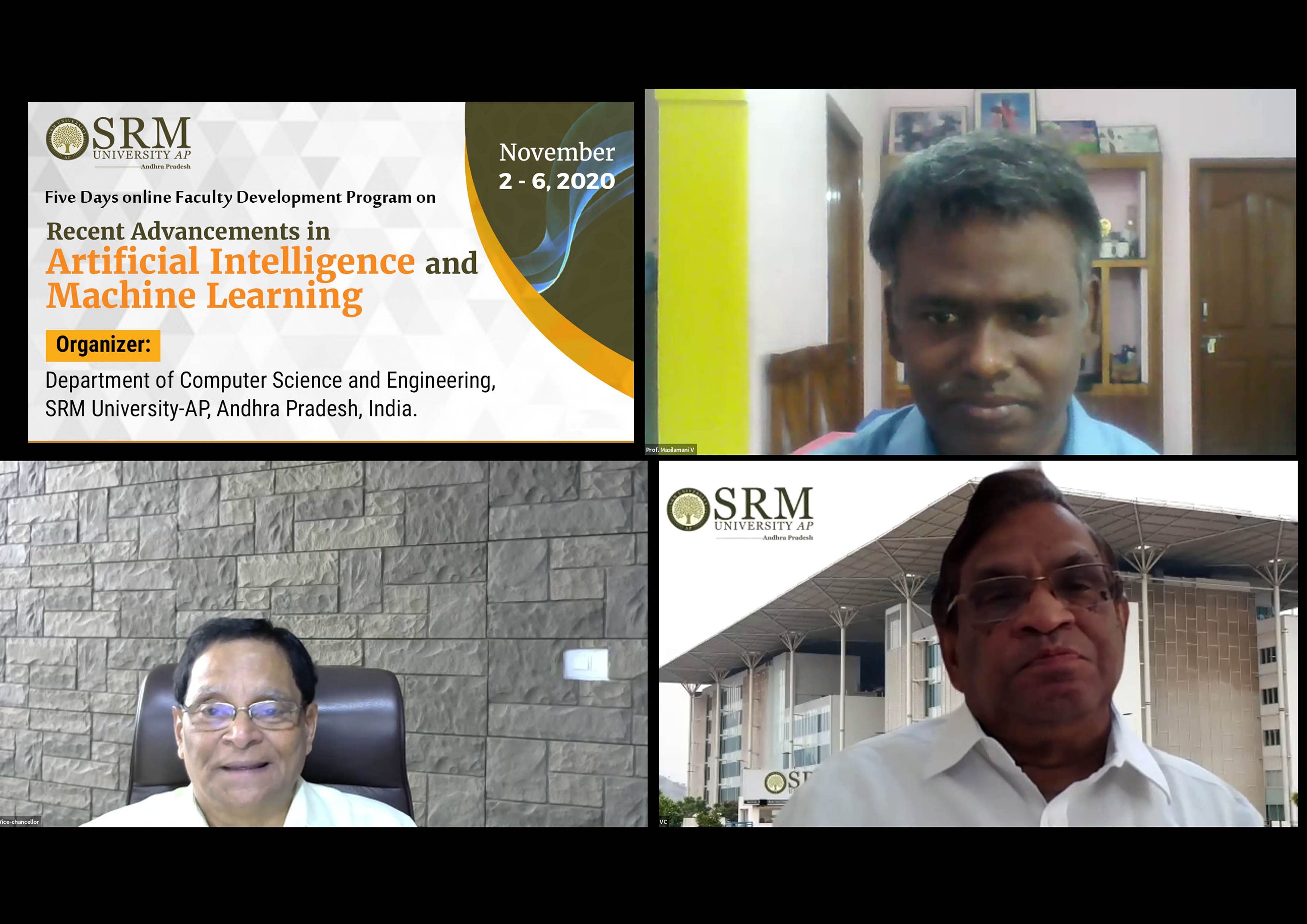 Faculty Development Programme (FDP) orchestrated by the Department of Computer Science Engineering, SRM University-AP, Andhra Pradesh was inaugurated by Prof VS Rao, Vice-Chancellor. The ten-day special programme is designed to provide insights on the latest developments in Artificial Intelligence (AI) and Machine Learning (ML) technology. Prof VS Rao said, “AI is the emerging branch of science which has its application in the fields of healthcare, entertainment, banking and finance, and marketing. The country’s progress would be accelerated due to the advent of AI that is so closely linked to human life.”
Faculty Development Programme (FDP) orchestrated by the Department of Computer Science Engineering, SRM University-AP, Andhra Pradesh was inaugurated by Prof VS Rao, Vice-Chancellor. The ten-day special programme is designed to provide insights on the latest developments in Artificial Intelligence (AI) and Machine Learning (ML) technology. Prof VS Rao said, “AI is the emerging branch of science which has its application in the fields of healthcare, entertainment, banking and finance, and marketing. The country’s progress would be accelerated due to the advent of AI that is so closely linked to human life.”
Similarly, Prof D Narayana Rao, Pro-Vice Chancellor spoke of the immense opportunities provided by the emerging AI technology. He said, “AI will be impacting human life in more ways than comprehendible. Considering its growth, demand for AI skills will continue to rise exponentially. As AI will continue to act as a technological innovator in the foreseeable future, there will be immense opportunities and prospects for the young professionals in this domain.”
The guest lecturer of the inaugural programme, Prof V Masilamani, Associate Professor, Computer Engineering, Indian Institute of Information Technology Design and Manufacturing (IIITDM) Kancheepuram, Tamil Nadu, India, discussed the importance of Machine Learning for digital image quality assessment. The other technical session was conducted by Prof Dipti Prasad Mukherjee, Professor, Indian Statistical Institute, Kolkata, who demonstrated how computer vision problems can be solved using machine learning techniques.
Further, the event was graced by the presence of Prof T Raghunathan, Professor, and Head of the Department of Computer Science and Engineering, along with other faculty members, and students as the audience. In addition, the technical sessions were coordinated by Dr Manikandan V M and Dr Sobin C C, Assistant Professors, Department of Computer Science and Engineering, SRM University-AP, Andhra Pradesh.
- Published in News
SRM AP’s student-run NEXT TECH LAB presents “HackSRM 3.0”
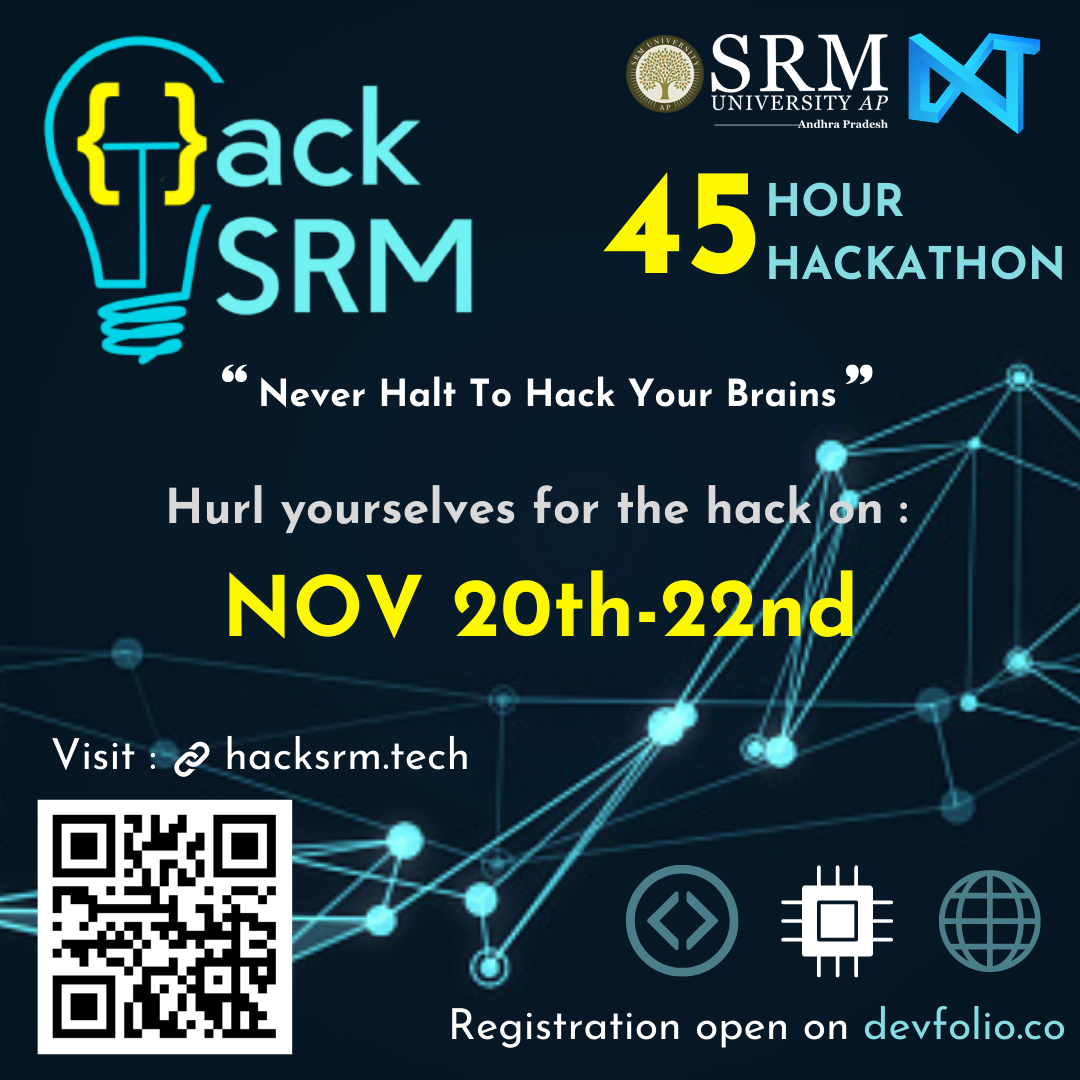 Next Tech Lab, the student-run technological hub of SRM University-AP, Andhra Pradesh is announcing the prestigious 3rd edition of HackSRM – “HackSRM 3.0”. This virtual Hackathon will be a 45-hour momentous event where students will exhibit their flair or technology and innovation. HackSRM will be hosted on India’s largest and most active developing community of builders’ platform- Devfolio, from November 20, 2020 till November 22, 2020. The hackathon will be an opportune moment for the geniuses to win exciting goodies by demonstrating their intellect. Further, the hackathon will put forth new tracks and themes ensuring a vivid competitive spirit among the participants. It will bring together the medium as well as large scale technological startups as partners and collaborators of the event. In addition, the technical hackathon will have an array of eminent panelists, speakers, and sponsors. Participate to experience an enriching and memorable journey that you will cherish for days to come.
Next Tech Lab, the student-run technological hub of SRM University-AP, Andhra Pradesh is announcing the prestigious 3rd edition of HackSRM – “HackSRM 3.0”. This virtual Hackathon will be a 45-hour momentous event where students will exhibit their flair or technology and innovation. HackSRM will be hosted on India’s largest and most active developing community of builders’ platform- Devfolio, from November 20, 2020 till November 22, 2020. The hackathon will be an opportune moment for the geniuses to win exciting goodies by demonstrating their intellect. Further, the hackathon will put forth new tracks and themes ensuring a vivid competitive spirit among the participants. It will bring together the medium as well as large scale technological startups as partners and collaborators of the event. In addition, the technical hackathon will have an array of eminent panelists, speakers, and sponsors. Participate to experience an enriching and memorable journey that you will cherish for days to come.
Register to participate free of charge by November 19, 2020, at 9 p.m. IST.
How do I register for HackSRM 3.0?
Register here
How do I connect with organizers, mentors, and other participants?
Join us on Discord
For information regarding prizes, sponsored challenges, themes, and FAQs
https://hacksrm.tech/
- Published in Events
SRM AP club Photography Society presents “Create or Re-Create”, a competition on the eve of Diwali
 One of the most popular club of SRM University-AP, Andhra Pradesh, Photography Society organizes a photography competition “Create or Re-Create” on the Eve of Diwali to uphold the spirit of festivity. Students are urged to refine their skills and take captivating images to win a chance to showcase their creativity to the world. For participating in the contest, students are recommended to send their entries by taking a photograph of any child celebrating Diwali during the pandemic or of artifacts arranged creatively. The images will be evaluated, and the winner will be announced on November 15, 2020. Also, all the photographs will be shared as stories on the Instagram handle of Photography Society.
One of the most popular club of SRM University-AP, Andhra Pradesh, Photography Society organizes a photography competition “Create or Re-Create” on the Eve of Diwali to uphold the spirit of festivity. Students are urged to refine their skills and take captivating images to win a chance to showcase their creativity to the world. For participating in the contest, students are recommended to send their entries by taking a photograph of any child celebrating Diwali during the pandemic or of artifacts arranged creatively. The images will be evaluated, and the winner will be announced on November 15, 2020. Also, all the photographs will be shared as stories on the Instagram handle of Photography Society.
Last date for sending your entries: November 13, 5:00 PM
Submission form: Click Here
- Published in Events
Car Designing Contest-2020 to challenge your imagination and intellect
 Department of Student Affairs brings another exciting yet thought-provoking Car Designing Contest-2020 for the tech-savvy Generation-Z. An open challenge is given to the students to visualise their dream car and share it with the judges and the spectators. The competition is divided into three categories:
Department of Student Affairs brings another exciting yet thought-provoking Car Designing Contest-2020 for the tech-savvy Generation-Z. An open challenge is given to the students to visualise their dream car and share it with the judges and the spectators. The competition is divided into three categories:
1. Sketch of your dream car.
2. Write up on your dream car.
3. Model of your dream car.
All the students from the first year to the fourth year can participate in the contest. They can project their dream car using a designing software or simple on paper. Moreover, if someone has a flair for writing, they are most welcome to express it through the medium of 100-150 finely crafted words.
As William Blake said,” What is now proved was only imagined”. Being a movie buff or literature enthusiast, you must have come across many high-tech, beautifully designed cars. BATMOBILE, Bond cars, The car in Kingsman movie, Hotwheels cars are some meagre examples of that. Even in Bollywood movies like “Dhoom 3”, we have seen BMW bikes which can change to a speedboat when required. It is now your time to show us how vividly and tactfully you can imagine a car like that. Let your imagination run wild and come up with something extraordinary. Add wings to your dreams and bring out the technical side of you into the open and charge your brains.
So grab the opportunity and get noticed. Fill the google form and submit your files. For any further information or query, you can mail to venkata_sesha@srmap.edu.in.
To apply and submit: Click Here to fill out the google form
Last Date for submission: November 13, 2020
Announcement of the Winners: November 15, 2020
- Published in Events, Students Affairs Events
Dr Nimai Mishra analyzes approaches to stabilize photoluminescent nanocrystals
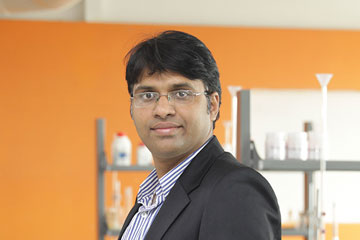 Dr Nimai Mishra, Assistant Professor, Department of Chemistry, SRM University-AP, Andhra Pradesh, along with his research group comprising of students pursuing PhD under him, Ms. V.G.Vasavi Dutt and Mr. Syed Akhil, have published a comprehensive mini review titled “Surface Passivation Strategies for Improving Photoluminescence and Stability of Cesium Lead Halide Perovskite Nanocrystals” in the Journal “ChemNanoMat” (Wiley-VCH) with an Impact Factor of 3.4.
Dr Nimai Mishra, Assistant Professor, Department of Chemistry, SRM University-AP, Andhra Pradesh, along with his research group comprising of students pursuing PhD under him, Ms. V.G.Vasavi Dutt and Mr. Syed Akhil, have published a comprehensive mini review titled “Surface Passivation Strategies for Improving Photoluminescence and Stability of Cesium Lead Halide Perovskite Nanocrystals” in the Journal “ChemNanoMat” (Wiley-VCH) with an Impact Factor of 3.4.
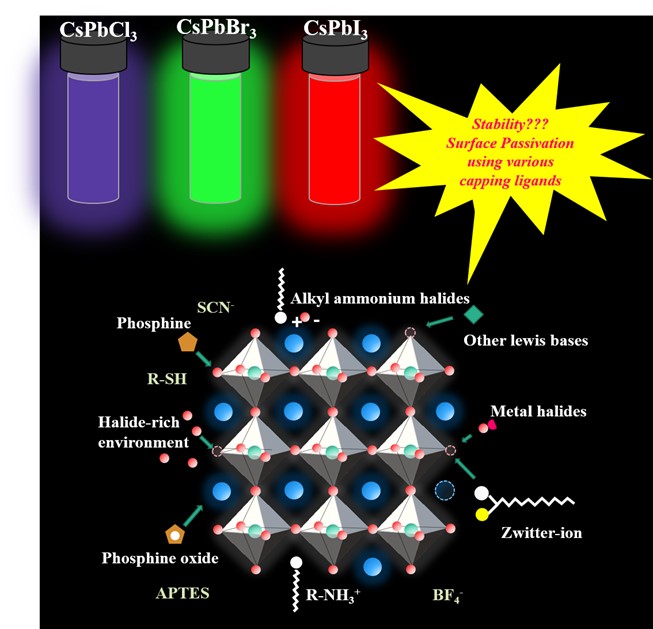 Cesium lead halide (CsPbX 3) perovskite nanocrystals (NCs) is emerging as an intriguing subject for the optoelectronics for its excellent optical properties and exceptional colour tunability. However, applicability of the materials become a major challenge due to their degenerative property. Consequently, researchers focus on developing various approaches to enhance the photoluminescence properties and stability of CsPbX 3 perovskite NCs. In the paper, Dr Mishras’s group reviews some of the promising approaches such as post‐synthetic modification, ligand exchange, and insitu addition.
Cesium lead halide (CsPbX 3) perovskite nanocrystals (NCs) is emerging as an intriguing subject for the optoelectronics for its excellent optical properties and exceptional colour tunability. However, applicability of the materials become a major challenge due to their degenerative property. Consequently, researchers focus on developing various approaches to enhance the photoluminescence properties and stability of CsPbX 3 perovskite NCs. In the paper, Dr Mishras’s group reviews some of the promising approaches such as post‐synthetic modification, ligand exchange, and insitu addition.
Further, the strategies summarized in this paper will enable the production of high-quality nanocrystals having the potential to be used as active material in LED devices. In the future, Dr Mishra and his group plans on utilizing some of these surface passivation techniques to develop prototype LED devices using high quality nanocrystals.
Read the full paper: Please Click Here
- Published in News, Research News
Students excel in Technological Business Hackathon organized by AIESEC in Amaravati
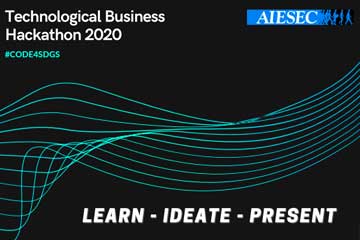 Students of SRM University-AP, Andhra Pradesh bagged the runners up award in the Technological Business Hackathon organized by AIESEC in Amaravati from October 30, 2020, till November 1, 2020. AIESEC is the world’s largest, global youth-run organization which acts as a platform for young minds to explore and develop their leadership potential. AIESEC works in accordance with the 17 Sustainable Development Goals (SDGs) devised by the United Nations and is recognized by UNESCO. Technological Business Hackathon was the first-ever virtual Hackathon hosted by AIESEC in Amaravati that aimed at developing innovative technological solutions for Sustainable Development Goals. It provided an opportunity for students to learn, ideate, solve, and present ideas on how to address some of the global challenges that the world is currently confronting.
Students of SRM University-AP, Andhra Pradesh bagged the runners up award in the Technological Business Hackathon organized by AIESEC in Amaravati from October 30, 2020, till November 1, 2020. AIESEC is the world’s largest, global youth-run organization which acts as a platform for young minds to explore and develop their leadership potential. AIESEC works in accordance with the 17 Sustainable Development Goals (SDGs) devised by the United Nations and is recognized by UNESCO. Technological Business Hackathon was the first-ever virtual Hackathon hosted by AIESEC in Amaravati that aimed at developing innovative technological solutions for Sustainable Development Goals. It provided an opportunity for students to learn, ideate, solve, and present ideas on how to address some of the global challenges that the world is currently confronting.
30 teams hailing from reputed colleges such as VIT AP, Christ University Bangalore, SRM AP, VVIT, KLU, Bennet, NID AP, NIT AP, JNTU Hyderabad, participated in the hackathon. The competition was split into a technical round and a business round, where 7 teams from SRM AP showcased their expertise in innovative technology. While two teams from SRM AP became the finalist, the second prize for the hackathon was awarded to one of them. The group developed a project inclined towards SDG 2: Zero Hunger, which involved the use of Hydroponics to grow fresh and sustainable food.
- Published in News
Prof S Chandrasekhar to deliver a talk during University Distinguished Lecture 04
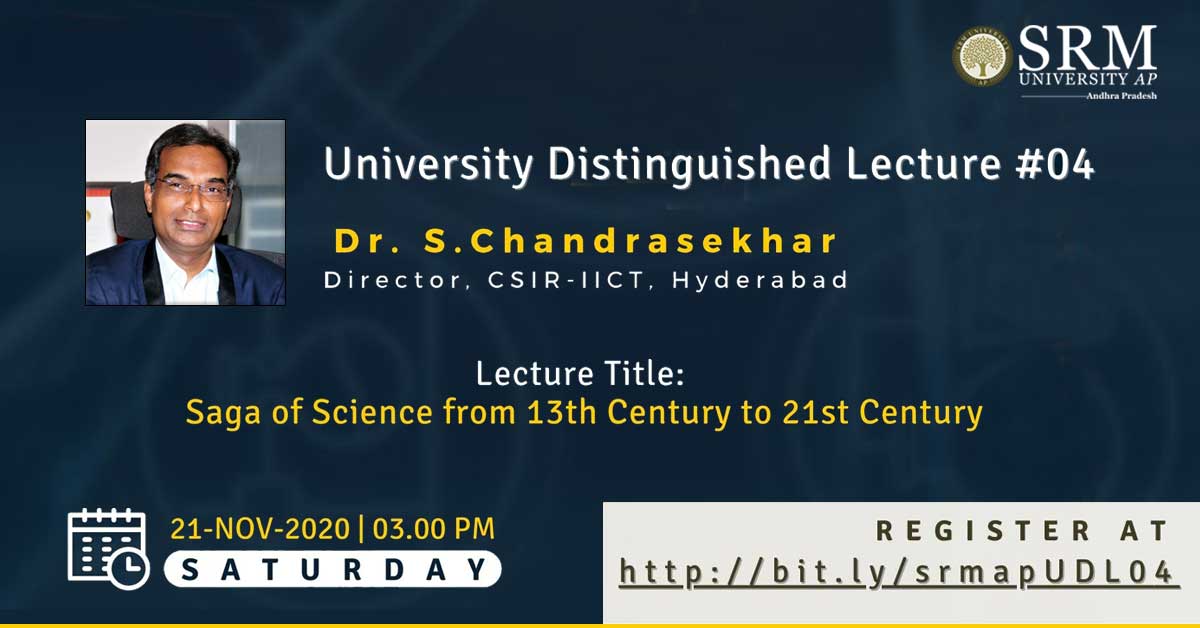 The fourth edition of the University Distinguished Lecture organized by SRM University-AP, Andhra Pradesh will be delivered by Prof S Chandrasekhar, Director, CSIR-Indian Institute of Chemical Technology, Hyderabad. On November 21, 2020, at 3 PM, the session on “Saga of Science from 13th Century to 21st Century” will be steered by the esteemed academician. Prof S Chandrasekhar joined CSIR-IICT as Scientist C and became the director in 2015. He has made significant contributions in diverse areas of organic chemistry with a special emphasis on chiral chemistry, total synthesis of biologically active natural products and pharmaceutical products. Further, he has received several accolades including the Eminent Scientist Award for contributions in the field of Chemistry from Telangana State Government in 2017, CNR Rao National Prize for Chemical Research 2012, CSIR Technology award 2014, and Infosys prize in Chemical sciences 2014 for his contributions to synthetic organic chemistry.
The fourth edition of the University Distinguished Lecture organized by SRM University-AP, Andhra Pradesh will be delivered by Prof S Chandrasekhar, Director, CSIR-Indian Institute of Chemical Technology, Hyderabad. On November 21, 2020, at 3 PM, the session on “Saga of Science from 13th Century to 21st Century” will be steered by the esteemed academician. Prof S Chandrasekhar joined CSIR-IICT as Scientist C and became the director in 2015. He has made significant contributions in diverse areas of organic chemistry with a special emphasis on chiral chemistry, total synthesis of biologically active natural products and pharmaceutical products. Further, he has received several accolades including the Eminent Scientist Award for contributions in the field of Chemistry from Telangana State Government in 2017, CNR Rao National Prize for Chemical Research 2012, CSIR Technology award 2014, and Infosys prize in Chemical sciences 2014 for his contributions to synthetic organic chemistry.
Prof S Chandrasekhar has developed technologies for the synthesis of the latest anti-tuberculosis drug, bedaquiline; anti-tumor and abortive drug, misoprostol; anti-platelet molecule, beraprost; antidepressive compound, sertralin and drug for treatment of schizophrenia, asenapine. During his lecture, Prof S Chandrasekhar will frame a narrative of the knowledge explosion in terms of science and technology from the 13th to 21st century. Providing a historical perspective, he will describe the evolution of the technology base and the transformation of production and service activities.
Registration Link: https:bit.ly/srmapUDL04 (Registration Closed)
- Published in Events, Research Events, University Distinguished Lecture, Webinars



